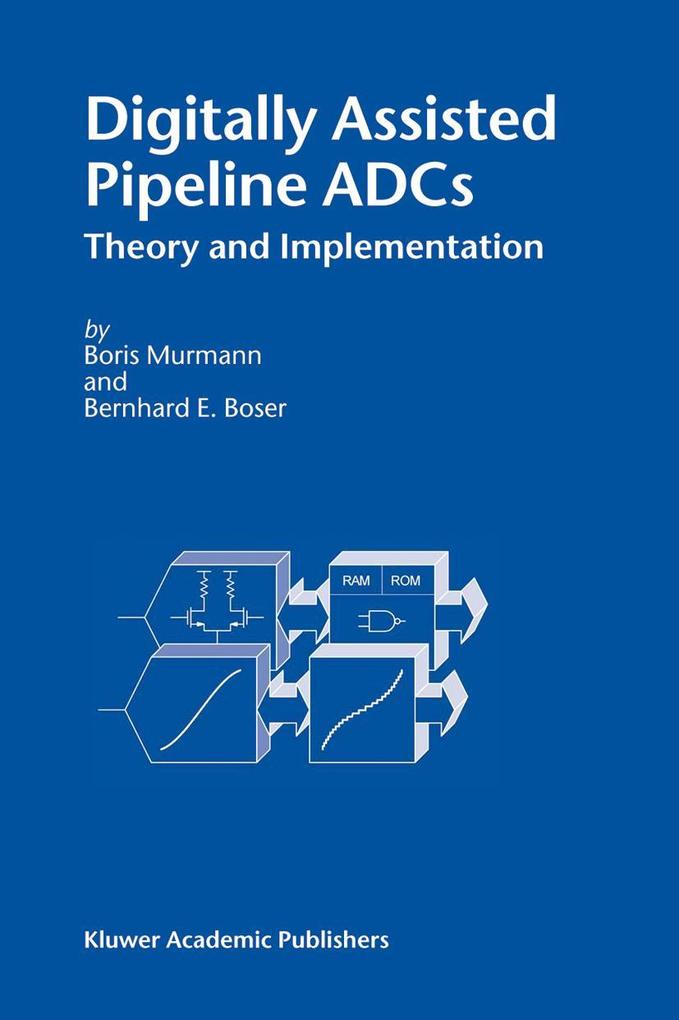
Zustellung: Do, 26.06. - Mo, 30.06.
Versand in 1-2 Wochen
VersandkostenfreiBestellen & in Filiale abholen:
Digitally Assisted Pipeline ADCs: Theory and Implementation explores the opportunity to reduce ADC power dissipation by leveraging digital signal processing capabilities in fine line integrated circuit technology. The described digitally assisted pipelined ADC uses a statistics-based system identification technique as an enabling element to replace precision residue amplifiers with simple open-loop gain stages. The digital compensation of analog circuit distortion eliminates one key factor in the classical noise-speed-linearity constraint loop and thereby enables a significant power reduction.
Digitally Assisted Pipeline ADCs: Theory and Implementation describes in detail the implementation and measurement results of a 12-bit, 75-MSample/sec proof-of-concept prototype. The Experimental converter achieves power savings greater than 60% over conventional implementations.
Digitally Assisted Pipeline ADCs: Theory and Implementationwill be of interest to researchers and professionals interested in advances of state-of-the-art in A/D conversion techniques.
Digitally Assisted Pipeline ADCs: Theory and Implementation describes in detail the implementation and measurement results of a 12-bit, 75-MSample/sec proof-of-concept prototype. The Experimental converter achieves power savings greater than 60% over conventional implementations.
Digitally Assisted Pipeline ADCs: Theory and Implementationwill be of interest to researchers and professionals interested in advances of state-of-the-art in A/D conversion techniques.
Inhaltsverzeichnis
List of Figures. - List of Tables. - Acknowledgements. - Preface. - 1: Introduction. - 2: Performance Trends. - 3: Scaling Analysis. - 4: Improving Analog Circuit Efficiency. - 5: Open-Loop Pipelined ADCs. - 6: Digital Nonlinearity Correction. - 7: Statistics-Based Parameter Estimation. - 8: Prototype Implementation. - 9: Experimental Results. - 10: Conclusion. - Appendices. A: Open-Loop Charge Redistribution. B: Estimator Variance. C: LMS Loop Analysis. 1. Time Constant. 2. Output Variance. 3. Maximum Gain Parameters. - References. - Index.
Produktdetails
Erscheinungsdatum
30. April 2004
Sprache
englisch
Auflage
2004
Seitenanzahl
180
Autor/Autorin
Bernhard E. Boser, Boris Murmann
Verlag/Hersteller
Produktart
gebunden
Abbildungen
XX, 155 p.
Gewicht
442 g
Größe (L/B/H)
241/160/15 mm
ISBN
9781402078392
Entdecken Sie mehr
Bewertungen
0 Bewertungen
Es wurden noch keine Bewertungen abgegeben. Schreiben Sie die erste Bewertung zu "Digitally Assisted Pipeline ADCs" und helfen Sie damit anderen bei der Kaufentscheidung.










